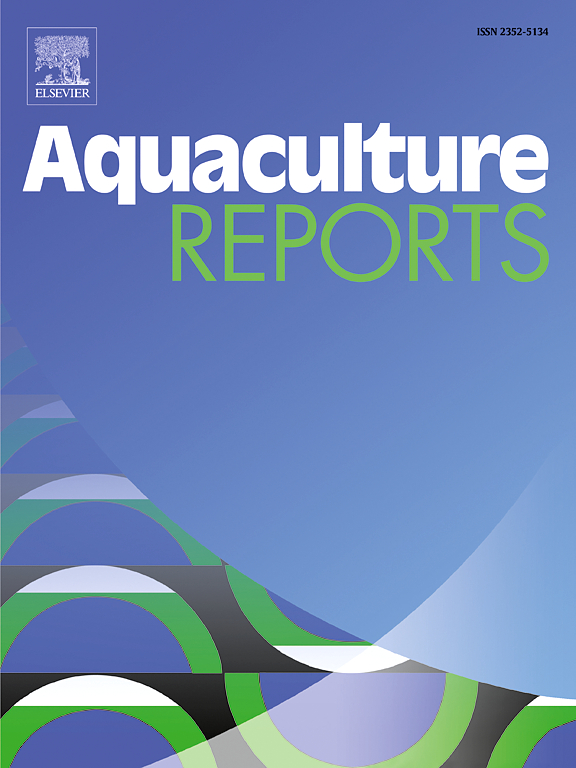Evaluation of a multi-epitope vaccine for Nocardia seriolae in Micropterus salmoides
IF 3.7
2区 农林科学
Q1 FISHERIES
引用次数: 0
Abstract
Nocardia seriolae can cause chronic granulomatous bacterial disease in fish, resulting in tissue necrosis. Currently, there is no effective method to control N. seriolae infection, which has led to significant economic losses in the aquaculture industry. In this study, immunoinformatics tools were employed to predict antigenic epitopes of seven antigenic proteins of N. seriolae: DnaK, GroEL, RpsA, PspA, TerD, RplL, and Ag85L. A total of 21 B-cell epitopes and 21 T-cell epitopes were predicted and concatenated into a multi-epitope protein named NSEP. To evaluate its immunogenicity, NSEP was used to immunize Miropterus salmoides. Four weeks post-immunization, compared with the adjuvant group, significant increases were observed in the serum activities of lysozyme (LYZ), acid phosphatase (ACP), alkaline phosphatase (AKP), and superoxide dismutase (SOD). Moreover, the transcription levels of immune related genes IL-10, IL-1 β, TNF-α, IFN-γ, IgM, and MHCI-α were significantly upregulated in both liver and spleen tissues. Following challenge with N. seriolae NS01, the NSEP-immunized group exhibited a relative percentage survival (RPS) of 61.29 %, along with significantly reduced bacterial loads. These results demonstrated that the multi-epitope protein NSEP holds promise as a candidate subunit vaccine against N. seriolae infection in M. salmoides.
沙丁胺类诺卡菌多表位疫苗的评价
诺卡菌可引起鱼类慢性肉芽肿性细菌性疾病,导致组织坏死。目前,没有有效的方法控制梭状奈瑟菌感染,这给养殖业造成了重大的经济损失。本研究采用免疫信息学工具预测了7种serolae抗原蛋白的抗原表位:DnaK、GroEL、RpsA、PspA、TerD、RplL和Ag85L。共预测了21个b细胞表位和21个t细胞表位,并将其连接成一个名为NSEP的多表位蛋白。为评价其免疫原性,采用NSEP对沙尾虾进行免疫。免疫后4周,与佐剂组相比,血清溶菌酶(LYZ)、酸性磷酸酶(ACP)、碱性磷酸酶(AKP)和超氧化物歧化酶(SOD)活性显著升高。免疫相关基因IL-10、IL-1 β、TNF-α、IFN-γ、IgM和MHCI-α在肝和脾组织中的转录水平均显著上调。接种NS01梭状奈瑟菌后,nsep免疫组的相对存活率(RPS)为61.29 %,细菌负荷显著降低。这些结果表明,多表位蛋白NSEP有望作为一种候选亚单位疫苗来对抗沙门螺杆菌感染。
本文章由计算机程序翻译,如有差异,请以英文原文为准。
求助全文
约1分钟内获得全文
求助全文
来源期刊

Aquaculture Reports
Agricultural and Biological Sciences-Animal Science and Zoology
CiteScore
5.90
自引率
8.10%
发文量
469
审稿时长
77 days
期刊介绍:
Aquaculture Reports will publish original research papers and reviews documenting outstanding science with a regional context and focus, answering the need for high quality information on novel species, systems and regions in emerging areas of aquaculture research and development, such as integrated multi-trophic aquaculture, urban aquaculture, ornamental, unfed aquaculture, offshore aquaculture and others. Papers having industry research as priority and encompassing product development research or current industry practice are encouraged.
 求助内容:
求助内容: 应助结果提醒方式:
应助结果提醒方式:


